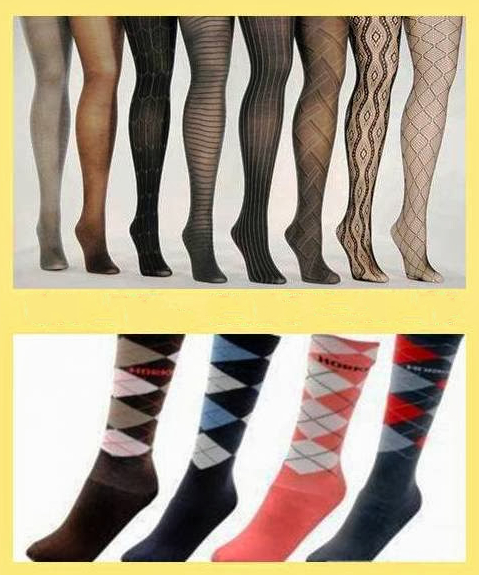
HISTORICAL CENTERS IN FOOTWEAR
Long history of socks, worn also in Egyptian civilization: in the tombs of the Pharaohs were found fragments of socks, in China, in antiquity, it was considered very inappropriate to show bare feet in public, shepherds and peasants of ancient Greece, before the sandals, shoes were worn on their feet, even the ancient Romans used to wrap their legs with linen or woolen bands. The sock’s birth, however, meant in the modern sense, dates back to the Middle Ages, when the silk began to be worked just to make this type of garment. Wearing socks, however, was only women men only after centuries, when it was granted to show their legs. The discovery of the stockings by women takes place around 1300. Later, around 1400, Venetian ladies spread the fashion of their long-embroidered stockings, hand-embroidered. The expensive manual production was supplanted soon by the machines. It was William Lee to design in 1589 the first frame to produce stockings in series. Someone succeeding copying it reproduced in America, which had already been colonized by the British. In the sixteenth century in England, about six hundred frames were used to manufacture socks. The subsequent invention of mechanical frames increased even more production by expanding the market. Made for men’s needs, socks found fertile ground in the imaginative female world. It will be the twentieth century, beginning with the Twenty Years, with the invention of the rayon – renamed “artificial silk” to widen broadly the market bands: socks, made with the new material that gave the legs a pleasing glitter, became accessible to a the wider population of the population and spread rapidly, towards the end of the Thirties to witness a true epochal revolution. It was French chemistry researcher Eleuthère Irènèe DuPont de Nemours, an immigrant in the US state of Delaware, to create the “Nylon” invented by Wallace H. Carothers. This was the first product to be the first “synthetic fiber”, which was termed “as resistant as steel and delicate as a spider web “. In 1940, with the beginning of World War II, the production of nylon stockings was abruptly interrupted, especially in the finest titles (yarn finitude (or gauge in English) is measured by calculating the number of needles in an inch Another “Units of Measure” used to describe the “thickness” of the sock is made up of “Denars”: the lowest the number of denarii and the more transparent the garment, while less resistant the thinnest stockings were the most sought after, and those worn with a large amount of money, being less transparent even though longer, were not preferred. tells that, in order to nurture the female population, they distribute nylon socks in full hands! In the 1960s, a new revolution in the hosiery world, once again signed DuPon the other hand, the American giant launched its “elastic Lycra” on the market. The invention of the tights by Allen Grant, who conceived it in 1959 using nylon as a material, had a great deal of success as a new fashion instrument, the result of the encounter between technology and new yarns. The beginning of the Third Millennium opens to the revelation of the “true socks”: innovative with the latest generation LYCRA. From the simple accessory to clothing which was originally the stocking became with the time a significant complement of the gown itself, almost an appendix: an integral and inalienable part of a fashion dress and fashion habit. Behind every model of stocking there are careful studies to the past in order to grasp suggestions to be re-adapted in a modern key, looking at the evolution of color, style, and costume.

